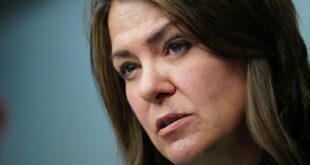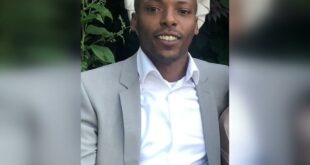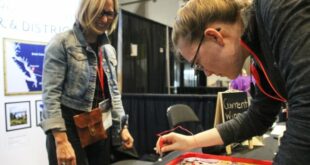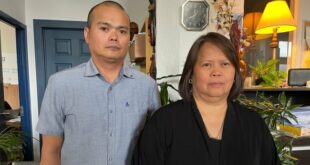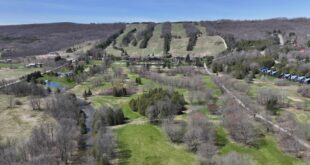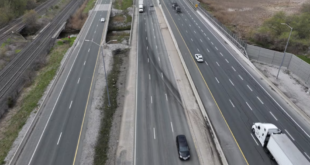Concerns linger over B.C. Wildfire Service’s planned ignition before wildfire spread, burned 170 homes in 2023.

When the wildfires around the North Shuswap region first started in July 2023, Jim Cooperman wasn’t too concerned — they were kilometres away from his Lee Creek home.
But day by day, the fires spread, inching toward the communities along Shuswap Lake, about 60 kilometres northeast of Kamloops, B.C. The hot and dry summer conditions didn’t help.
Then came August 17 — the day the B.C. Wildfire Service (BCWS) performed a planned ignition in hopes of stopping forecasted winds from blowing the flames directly into the lakefront communities.
“We find out that the wildfire service is planning to do a backburn, which is a 10-kilometre-long aerial ignition which is just two kilometres from our house —and just prior to a wind storm. We were all totally freaked out,” he recalled.
Cooperman has been one of the loudest critics of the B.C. Wildfire Service’s planned ignition, which occurred hours before the flames travelled to Lee Creek, Scotch Creek, and Celista, burning through more than 170 homes and structures. Critics believe it exacerbated the wildfire.

“You don’t light a fire in a drought before a windstorm, but they decided to do it,” he said.
What followed were days of tension and anxiety in the North Shuswap, as many residents stayed behind to fight fires themselves, despite provincial officials telling them to leave.
The BCWS stands by its decision to light the planned ignition, which it says successfully reduced fuels in the area. The ignition is under investigation by B.C.’s Forest Practices Board.
Eight months later — and at the dawn of a new wildfire season — many residents say wounds of that wildfire season are still fresh. For some, trust in the BCWS has been eroded, while others make preparations to once again stay behind in the event of future wildfires.
“The fire has really brought the community together. We call it Shuswap strong,” said Cooperman. “The North Shuswap people are resilient.”
The province says there will be more collaboration with locals in the event of future wildfire seasons.

Planned ignition
The Lower East Adams Lake and Bush Creek East wildfires ignited via lightning strike in mid-July. Their impact on humans was minimal until they started rapidly moving toward communities along the North Shuswap about a month later, according to the BCWS.
On August 17, the BCWS made the decision to light a planned ignition, or backburn, “out of necessity.”
“The wildfire had broken through existing fire guards and the region was about to experience some of the most unfavourable weather conditions of the season,” wrote service spokesperson Forrest Tower in a statement.
The backburn was lit along a 10-kilometre stretch of power lines meant to serve as a control line, or barrier, to stop the fire from spreading.

The service contends the move successfully reduced fuels and slowed the growth of fire.
“It cannot be overstated: the purpose of this planned ignition was to reduce this wildfire’s impact on the community, not to stop it from burning all together,” wrote Tower.
Residents believe the ignition exacerbated both wildfires, which eventually merged, and led to the rapid approach of the flames toward communities. Complaints have led to an ongoing Forest Practices Board investigation of the ignition.
Following the burn, wildfire fighters also raised safety concerns about the incident to the B.C. General Employees Union, the union confirmed to CBC News.
Evacuation orders
Mark Acton, whose family runs a marina in Lee Creek, says he watched as fires raced down the mountainside from where the backburn had been lit.
“[The BCWS] definitely needs to come to our community and acknowledge what actually happened. Come and have a recap,” he said.
Acton was among a group of Lee Creek residents who sprung into action to save homes and businesses as the fires tore through the area.

“We rigged up all of our trucks — we had four water trucks ready to go, an excavator, two loaders, all hands on deck,” he said.
As evacuation orders rolled in, Acton and many others stayed behind. At the time, provincial officials characterized their efforts as dangerous and against the law. There were reports of conflict between residents, wildfire crews, and police maintaining evacuation lines.
Acton says residents simply wanted to save their community and were prepared to do so.
“At the time of the evacuation order, a lot of people do need to leave,” he said. “But anyone that’s actually able and willing to help, and they have the assets and the equipment, and they know this area — nobody knows the bush in their backyards better than the locals.”
“If the locals did not stay, this town would be in a whole lot worse shape,” said Acton.
On April 4, while announcing recommendations made by a wildfire expert task force, B.C. Premier David Eby acknowledged Shuswap locals had saved structures.

“My understanding is that they did protect a number of homes in the community. This resulted in conflict that we’re really hoping to avoid in the upcoming fire season,” said Eby. “When there’s an emergency, we don’t want to be dealing with conflict on the ground. We want to be working together as a unified whole.”
Among the task force’s recommendations are more collaboration and communication with residents in fire-affected communities.
Preparing for the next wildfire season
Karl Bischoff is among those preparing for another potentially destructive wildfire season. The Magna Bay resident fought the fire on its easternmost flank, right on the edge of his property.
“We had about probably 30 to 40 guys on both sides with about a dozen pickups and big water trucks and whatever, and we chased it for nine days before the [BCWS crews] showed up,” he recalled.

“The part we find disturbing is they don’t have enough soldiers to fight the war. So just call upon us — it’s so simple. And we have lots of knowledge,” he added.
Bischoff, a lifelong North Shuswap resident, is organizing provincially-certified S-100 Basic Fire Suppression and Safety training for a group of residents in the community.
He says the goal is to put together a citizens fire brigade, should wildfires occur in the remaining forests in the area in future seasons.
“We see smoke, no strings attached, we’re going to go after it until forestry shows up. And if they want us to go home, we’ll go home. But they gotta maintain it, and they gotta put it out,” he said.
ABOUT THE AUTHOR
Jon Hernandez is an award-winning multimedia journalist from Vancouver, British Columbia. His reporting has explored mass international migration in Chile, controversial logging practices in British Columbia, and the global HIV/AIDS epidemic. Follow Jon Hernandez on Twitter:
*****
Credit belongs to : www.cbc.ca
 Atin Ito First Filipino Community Newspaper in Ontario
Atin Ito First Filipino Community Newspaper in Ontario
